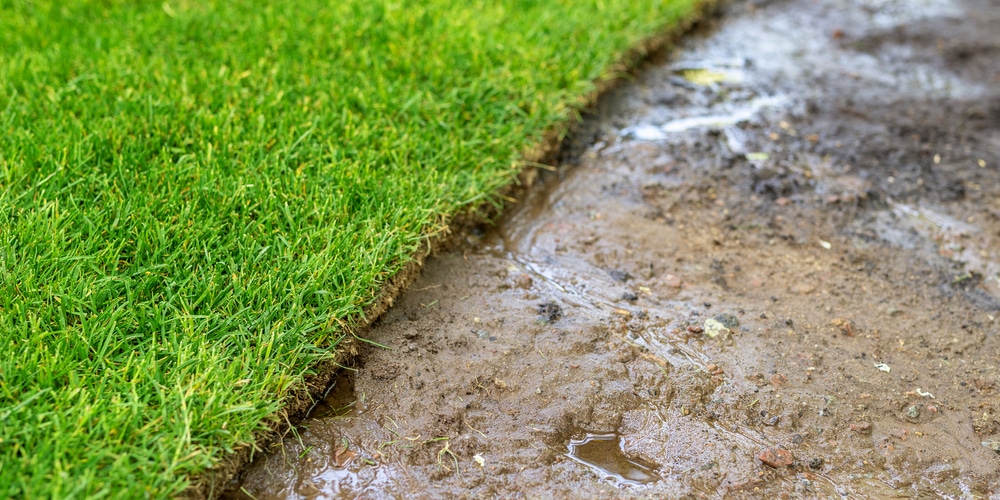After installing new sod, you should water your lawn regularly to ensure that it’s able to establish itself and take root. It’s possible to overwater new sod, which could result in a soggy, waterlogged yard. New sod does need plenty of water, but it shouldn’t feel squelchy underfoot.
If you’re planning to lay new sod and are wondering how much water your lawn requires, read on. This article will answer the question, ‘can you overwater new sod?’
Yes, You Can Overwater New Sod

It is possible to overwater new sod, and this will make your lawn soggy and stop the new grass from creating a robust root system. In the long run, you’ll likely end up with a muddy yard and dead grass if you over water new sod.
Overwatering sod also makes it more prone to disease, fungus development, and insect infestation. You should aim to keep your new sod mist so that it can grow and establish itself; however, it should feel soggy. Here are some problems that can be caused by overwatering.
Failure to Knit with the soil
Your new sod requires more water in the first two weeks after it’s laid. However, you should be careful not to overwater as this will affect the establishment of new roots, and your sod may fail to knit into the soil.
A week after your new sod is laid, it should begin the grow roots deep into the soil. This knits the sod with the earth below. You should also notice that the grass has started to grow. You can check how well the roots are growing by gently lifting the corner of your sod. If you feel resistance, the roots are taking hold. If it’s easy to lift up the sod without much force, this is a sign that you’ve overwatered your grass.
Root Rot
Overwatering new sod could cause the roots to rot. It’s a good idea to have a look at your new sod’s roots in the first week after installation. If you notice any signs of root rot, you should reduce the frequency and amount of water you’re giving your lawn. New sod does need to be watered daily, but you should be careful not to overdo it.
Soggy Soil
When you touch the new sod, it should feel damp but not soggy and waterlogged. If your sod feels too wet, this is a sign of overwatering, which will lead to root rot and kill your sod.
Moisture Depth
Another way to tell whether you’re overwatering your new sod is to check the moisture depth of the soil. After installation your new sod, you only need to provide enough water to moisten the top inch of the soil underneath. Once the sod root begins to grow, you can water it down to six inches. As the sod establishes itself, you can also reduce the number of times you provide water.
Conclusion
Can you overwater new sod? Absolutely!
Overwatering new sod can cause problems such as root rot, which may kill your grass. A soggy lawn can kill your sod or make the grass more prone to disease and fungus. Some insects such as mosquitoes like to live in damp conditions, and you may find that you have an insect infestation if you over water your lawn.